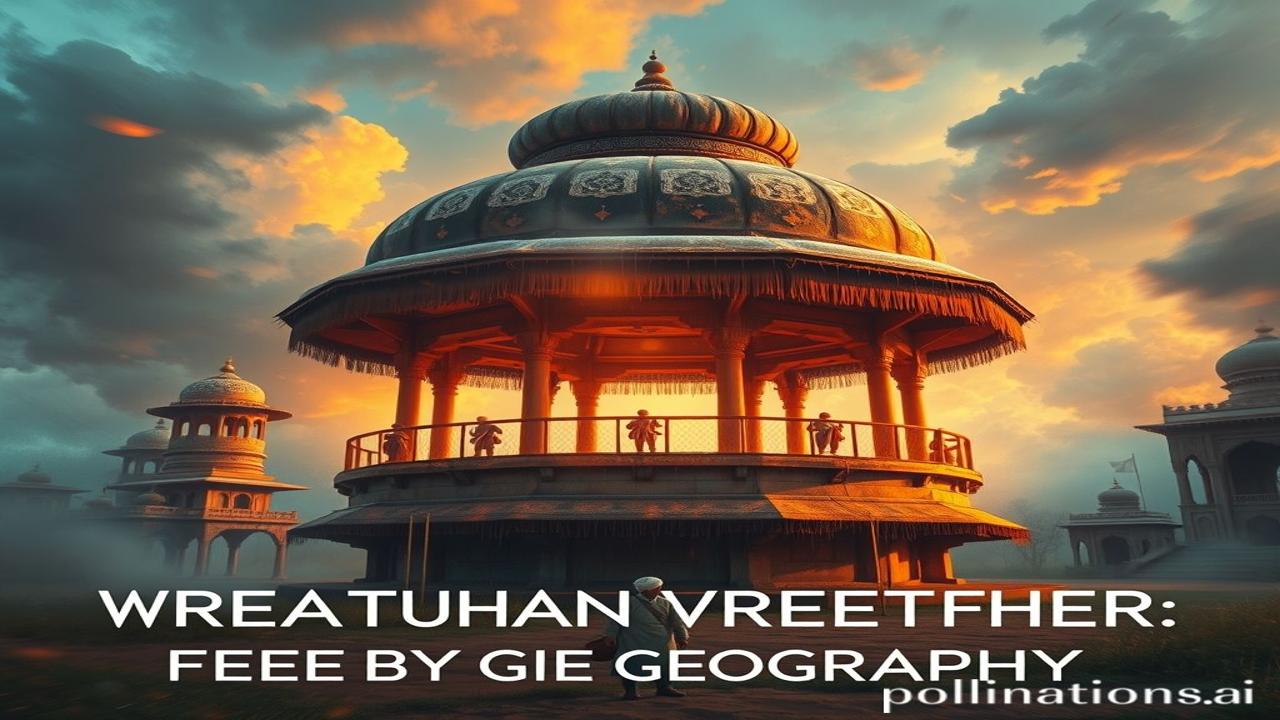Waqt ki Dhool Mein Chhupe Mausam Ke Raaz: Traditional Weather Forecasting in India
Kabhi socha hai, jab science itni advanced nahi thi, toh mere desh ke kisaan aur fisherfolk kaise jaante the kab barish hogi aur kab nahi? Kaise unhone khud ko tufaan se bachaya aur fasalon ko sahi samay par boya? Waqt ki dhool mein kuch aisi hi kahaniyan chhupi hain, un logon ki kahaniyan jinhone prakriti ko hi apna guru mana. Aaj hum inhi raaz ko kholenge, explore karenge India ki rich tradition of weather forecasting.
मौसम विज्ञान का इतिहास: A Glance at the Past
Traditional weather forecasting, yaani mausam ka purana anumaan, India mein koi nayi baat nahi hai. Yeh toh hamare culture aur itihaas ka hissa hai. Vedas se lekar arthashastra tak, har jagah mausam ke anumaan aur uske prabhav ka zikr milta hai.
- Vedic Era (1500-500 BCE): Vedic hymns, especially those in the Rigveda and Atharvaveda, contain observations of natural phenomena associated with weather patterns. For example, the movement of clouds, the behavior of animals, and the direction of winds were carefully observed and used to predict weather.
- Ancient India (500 BCE-500 CE): During the time of rulers like the Mauryas and Guptas, weather forecasting was essential for agriculture and trade. Texts like the Arthashastra (written by Chanakya in 4th century BCE) provide guidance on interpreting signs from the environment to predict weather.
- Medieval Period (500-1750 CE): As India became a hub for cultural exchange, weather forecasting techniques became more refined. The knowledge of astronomy and meteorology from Persia and Arabia blended with existing Indian practices. This period saw the creation of almanacs like the Panchangam, which included weather forecasts based on planetary positions.
But why was this important? Imagine, no accurate forecasts meant entire communities could face famine or destruction. These traditional methods were lifelines, passed down through generations.
ज़मीनी सच – लोग और जीवन: The Soul of Weather Wisdom
Chaliye, hum ek pal ke liye 18th century ke Rajasthan ke kisi gaanv mein chalte hain. Ma Rukmini ne aaj naye kapde pehne, kyunki gaon mein sab ek saath ek ped ke neeche baithe hain. Panditji Panchangam padh rahe hain aur aane wale mausam ke bare mein bata rahe hain. Unki aawaz mein ek vishwas hai, ek aisa vishwas jo unhone apne purvajon se seekha hai.
- The Farmer’s Eye: Farmers keenly observed the behavior of birds and animals. If ants were moving their eggs to higher ground, it was a sure sign of impending floods. Crows flying in a specific direction indicated favorable weather for sowing.
- Fishermen’s Knowledge: Coastal communities relied on sea currents, wind patterns, and the behavior of marine life to predict storms and ideal fishing times. Generations of fishermen passed down this knowledge orally.
- The Wisdom of the Saints: Many saints and spiritual leaders in India were also skilled in observing nature. Their insights were often shared through poems and proverbs.
“Kak bolat hai, jald aavat hai,” Ma Rukmini ne kaha. This ancient saying translates to, “When crows caw, rain is coming soon.” For her, this wasn’t just a saying; it was a trusted weather forecast.
धरोहर और पहचान: Echoes of the Past Today
Aaj bhi, bhale hi hum modern technology ka istemal karte hain, traditional weather forecasting ke echoes humare culture mein zinda hain.
- Festivals: Many Indian festivals are timed according to agricultural cycles, which are, in turn, dependent on weather patterns. Holi, Diwali, and Pongal all have roots in agricultural practices guided by seasonal changes.
- Rituals: Even today, many farmers consult almanacs (Panchangam) for auspicious times to sow seeds or harvest crops. The knowledge passed down through generations is still respected.
- Language: Regional languages are rich with idioms and sayings related to weather prediction. These sayings reflect the deep connection between people and their environment.
- Architecture: Traditional Indian architecture often incorporates elements to mitigate the impact of extreme weather. Houses with thick mud walls provided insulation against heat, while sloping roofs were designed to handle heavy rainfall.
Yeh Bharatiyata ka ek atoot hissa hai – prakriti se judna, uski sunna, aur uske hisab se jeena.
मजेदार तथ्य या भ्रम-भंजक: Myths vs. Reality
Log samajhte hain ki “subah ka megha barish ka sanket hota hai,” lekin asli sach yeh hai ki subah ka megha kabhi kabhi bas dhund hota hai, jo dhoop mein gayab ho jaata hai! Also, “ek achi barish ek naya daur laati hai,” lekin kabhi kabhi yeh ek tufaan ka sanket bhi ho sakti hai.
दृश्य और भावनाएं: Sensory Immersion
Imagine the air before the monsoon – heavy with humidity, the scent of parched earth ready to drink the rain. The temple bells chime, a hopeful prayer for a bountiful season. The rhythmic sound of dhols signals the start of a festival, a celebration of nature’s gifts. The feel of cool mud under your feet after the first rain… these are the experiences that tied people to the weather, making them keen observers of its moods.
अंतिम विचार या उद्धरण: Reflections
“जल ही जीवन है,” they say. In our modern rush, let’s not forget the ancient wisdom that teaches us to respect and understand the rhythm of nature. Let’s remember that the knowledge of our ancestors is not just history; it is a guide to a sustainable future.
“प्रकृति रक्षति रक्षिता” – Nature protects those who protect it.
